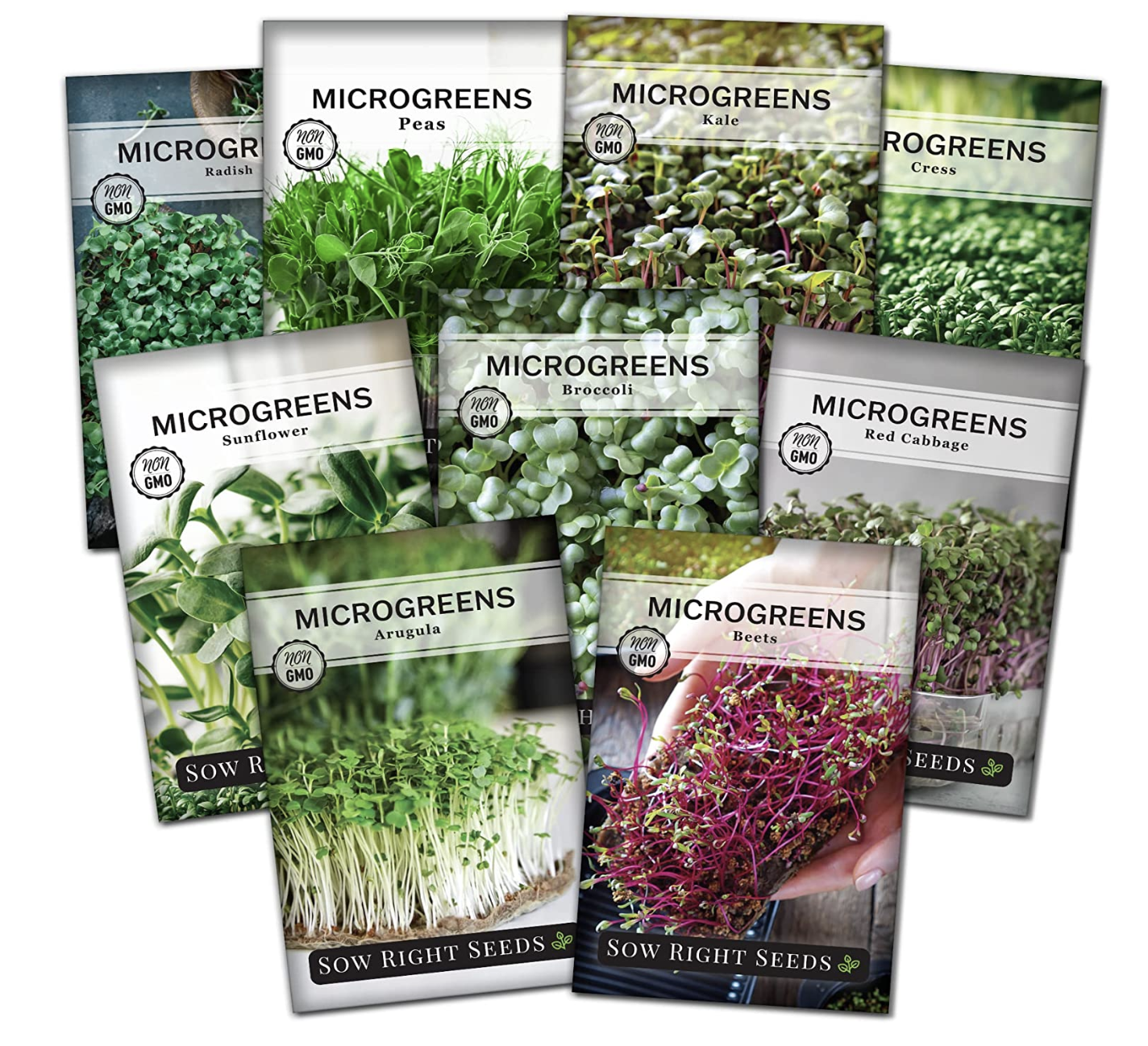5 easy ways to start hydroponic gardening - join the growing trend that gives you fresh produce all year round
These 5 quick ways to start hydroponic gardening will allow you to get on with the trend that gives you fresh produce all year round. Not just for the green thumbed.
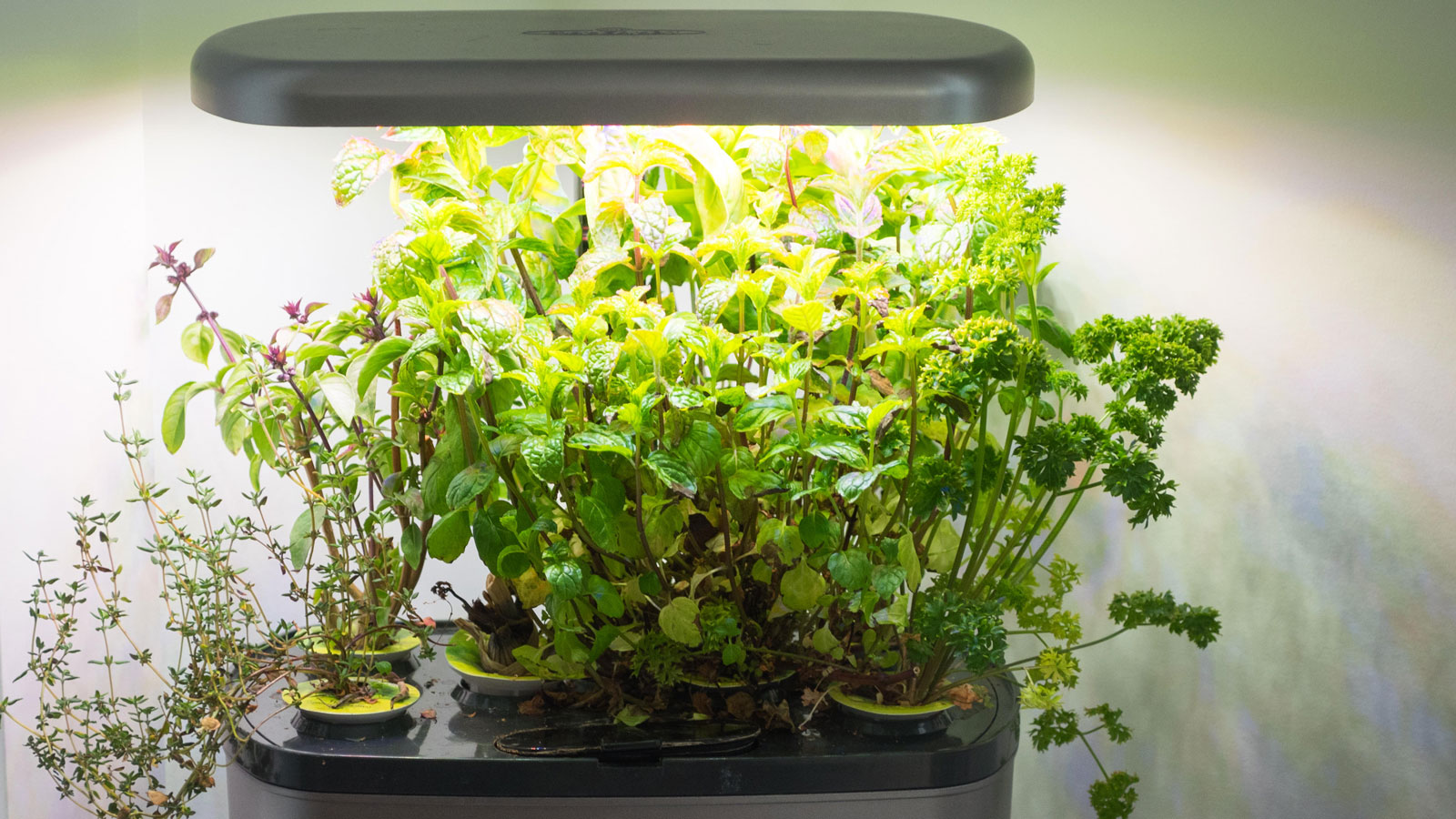
Setting up an indoor garden gives you the same health benefits as an outdoor garden. It can really improve your lifestyle when it comes to reducing stress levels and enhancing relaxation time, plus it allows you year-round access to fresh homegrown produce.
If you live in the city and don't have your own yard you can still grow your own with the latest hydroponic gardening technology. Smart units that sit on kitchen countertops with built-in LED grow lamps are easy to set up and maintain, plus they don't take up too much room. Alternatively you can make your own hydroponic growing and indoor garden system with a few basic elements.
What is hydroponics? It's the science of growing plants without using soil. Instead your plants are fed with a water-based, nutrient-dense solution. Although it might sound technical, it's actually not and is a great way of experimenting with growing fresh food if your options are limited because you live in a compact urban environment.
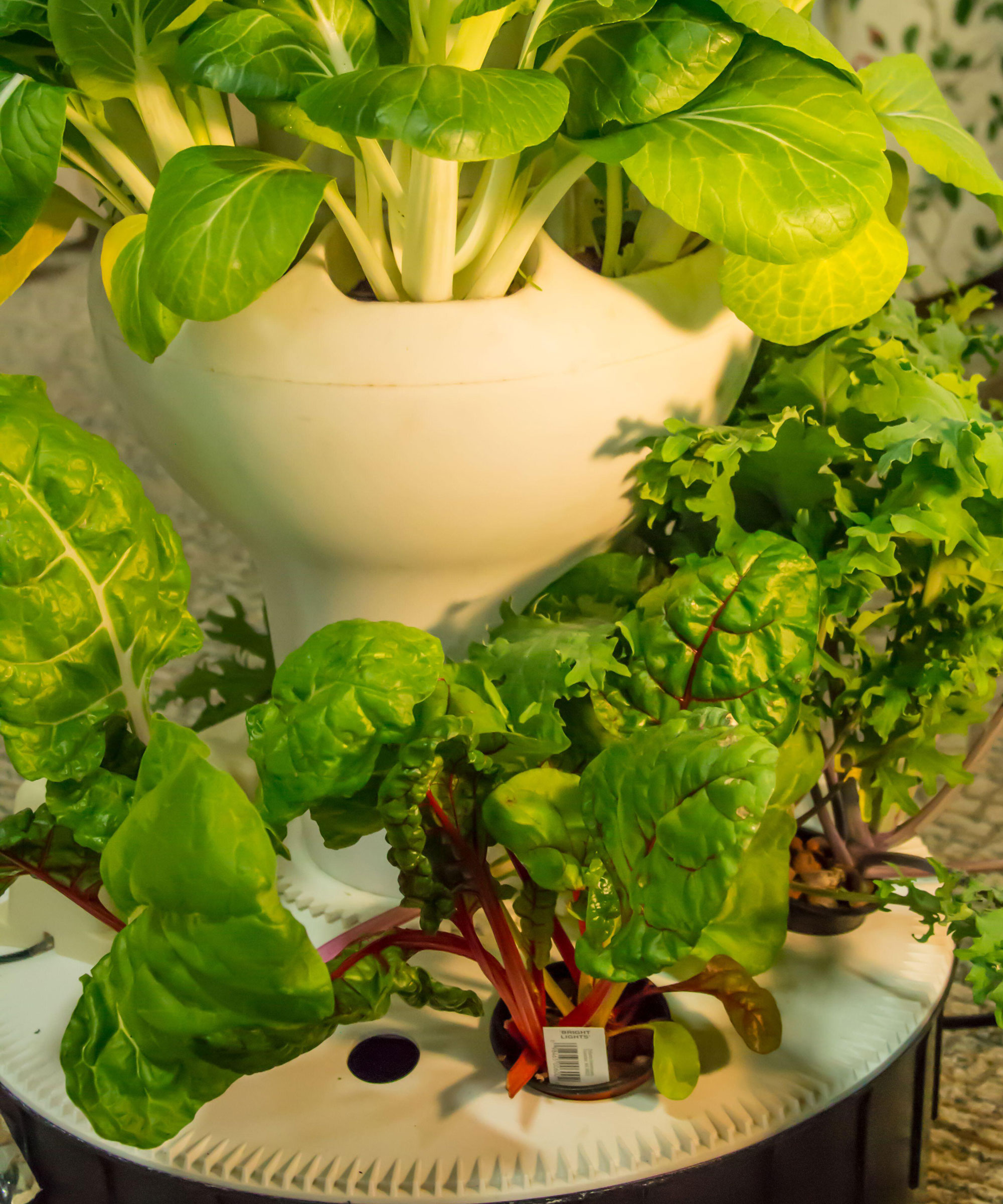
There are many hydroponic growing systems to choose from
5 easy ways to start hydroponic gardening
'Picture this: plants growing strong and healthy without a speck of soil in sight. Hydroponic gardening is an incredible method of nurturing plants using a nutrient-rich water solution instead of soil,' explains alternative agriculture expert Elliot Webb, founder of Urban Farm-It.
Faster growth, higher yields, saving water and knowing exactly where your produce has come from are just a few perks of this innovative approach to growing your own indoor vegetable garden. The good news is all you need to start your own hydroponic garden is a growing medium, a nutrient solution, and a way to oxygenate the roots.
With our introductory guide to hydroponic gardening you can now find out how satisfying it is taking care of plants from seed to harvest in a controlled indoor environment, then enjoying the fresh produce.
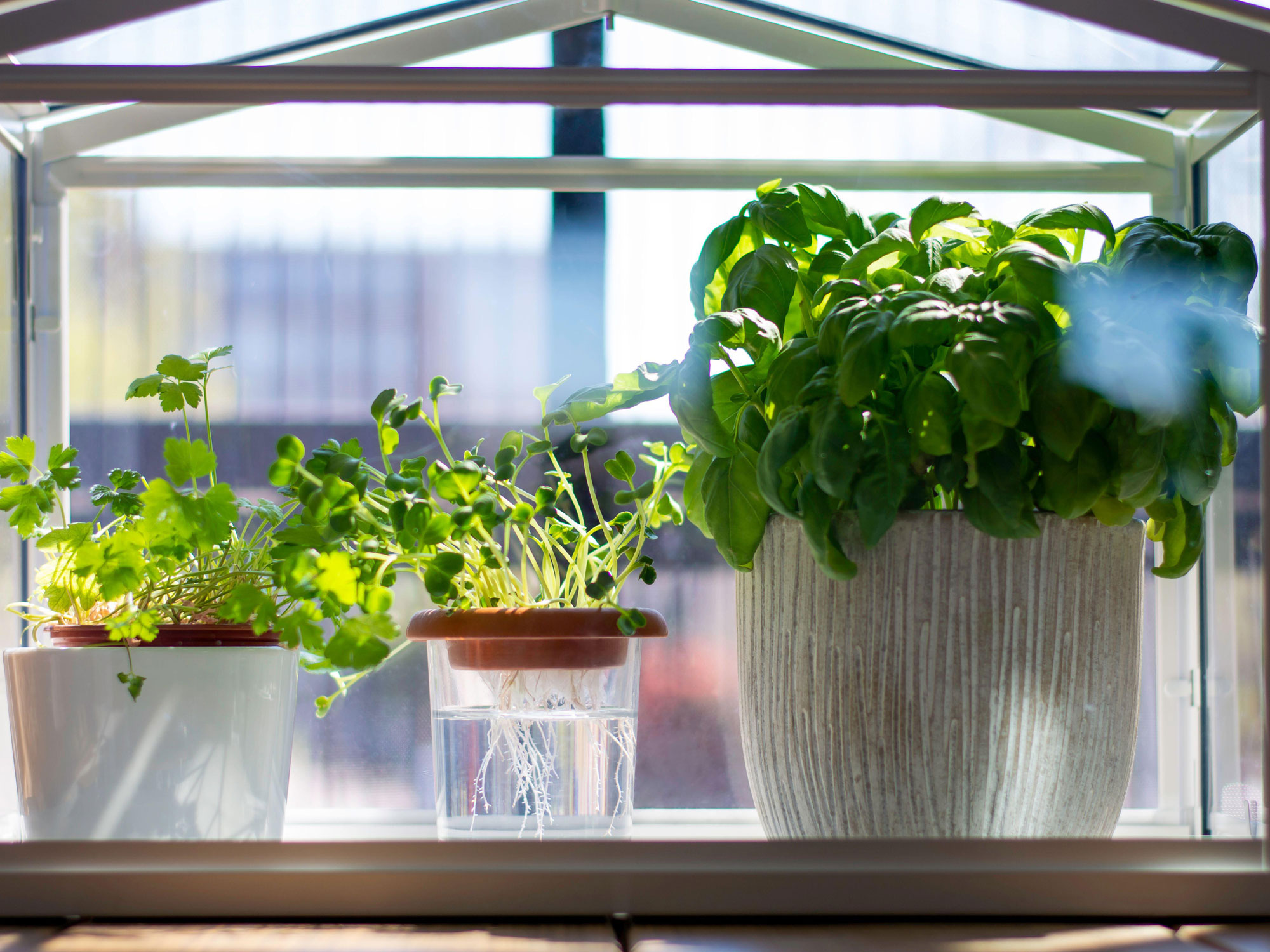
Herbs are an easy way to get into hydroponic gardening
1. Pick an easy hydroponic growing system
Start by exploring beginner-friendly hydroponic systems that fit your space, budget, and needs. Some popular options for beginners include deep water culture, wick systems, and simple ebb and flow systems (see a more detailed explanation at the end of this article). Make sure you understand the basics of each system before deciding on one.
'Consider buying a small hydroponic smart system like an AeroGarden or a Click & Grow,' suggests Mary Jane Duford, gardening expert and founder of Home for the Harvest. 'These can be expensive up-front but it's the simplest way for most households to get started.'
Another easy way in for beginners is to build a hydroponic passive wick system at home - this is how to turn your window sill into an indoor garden with minimal fuss. 'This can be quite affordable if you reuse containers from around the house,' says Mary Jane. 'You’ll need a large tub to hold the nutrient solution and a smaller bucket or tray for the plants. You can use fabric rope (cotton or nylon) as a wick, along with soil-free potting media for the plants.'
2. Choose beginner-friendly plants
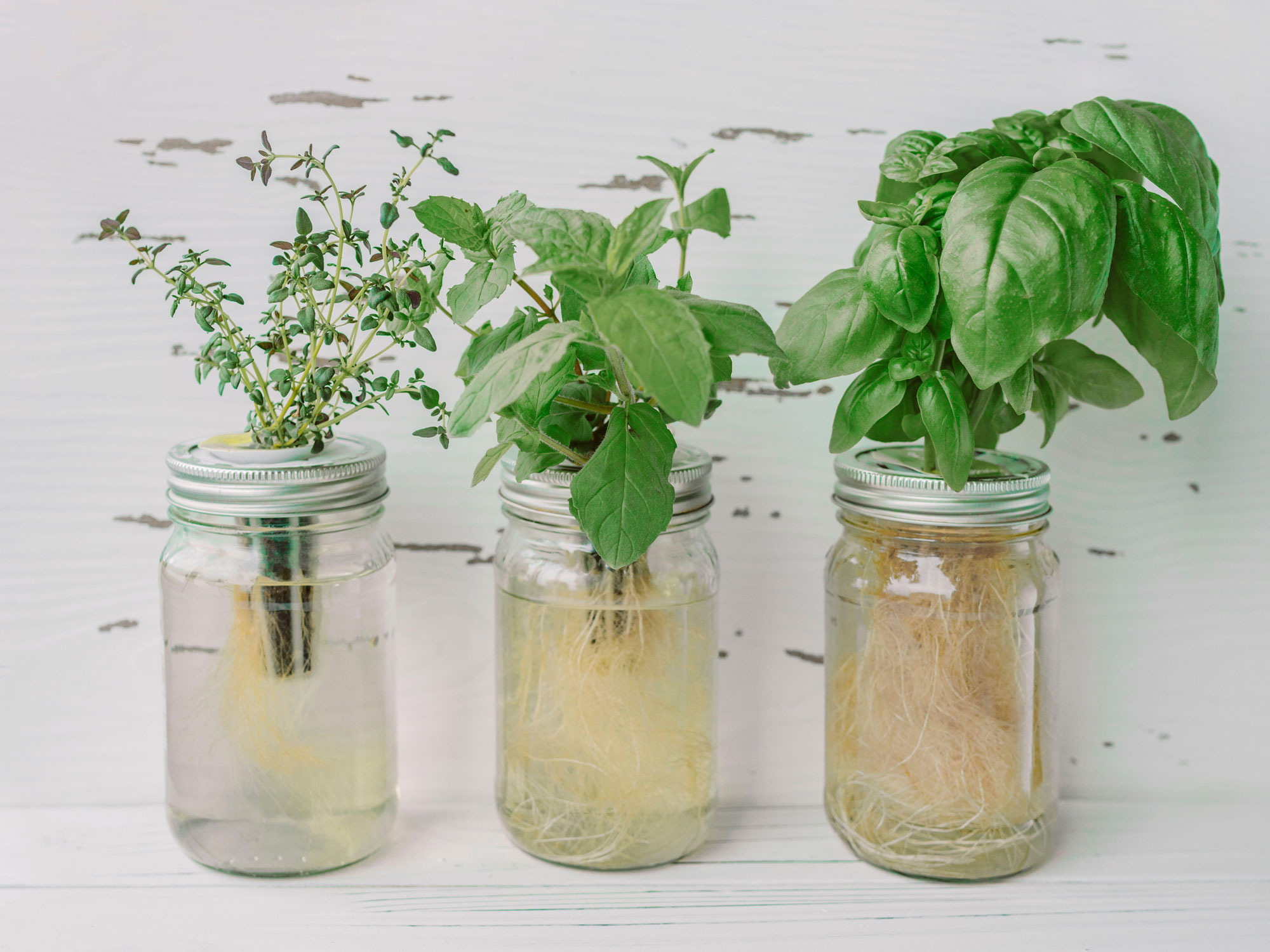
Grow your own regular supply of herbs and leafy greens
Some plants are easier to grow hydroponically than others. If you're new to this, consider starting with what herbs grow best in a kitchen anyway - straightforward ones like basil and mint or leafy greens. These plants have simple needs and grow well in an indoor plant growing system.
Try growing a tray of microgreens on the countertop. 'Some systems have a fabric grow mat, but you can also just use a sheet of paper towel to hold in moisture so the seeds can germinate,' says Mary Jane. 'Most microgreens take so little time to grow that you don’t have to add fertilizer/nutrients, as the seeds themselves contain the initial nutrition for the first tiny sprouts.'
Another simple way in to hydroponic gardening is starting with a glass jar and some pre-cut scallions - one of the easiest vegetables you can grow indoors all year. 'You can create a mini hydroponic system by placing 1-2 inches of cold tap water into a jar, and placing it in your window sill,' says Angelo Kelvakis, master horticulturalist and head of R+D for Rise Gardens, one of the leading makers of indoor hydroponic gardening systems.
'Cut some scallions, saving the white bulbs and the roots. Place the cut scallions in the jar so they stand upright with the roots in the water, and the tops above the water. This will allow you to regrow the green tops of the scallions and continually cut and come again.'
3. Set up the right growing environment
To help your plants grow well, make sure your hydroponic garden has proper lighting, temperature, and humidity. 'Choose a growing area with enough light and ventilation, as well as access to a water source,' says Lindsey Hyland, hydroponic gardening expert and founder of Urban Organic Yield.
When using a hydroponic system, you will have running water and nutrients supporting the growth of your plants, but the lights are how your plants get their food. 'Grow lights have specialized spectrums of LED lights that support plant growth,' says Angelo Kelvakis. 'Having strong enough lights will ensure that you are able to grow all types of plants.'
Different plants have different light needs. LED grow lights like these ones from Amazon are a great choice for beginners because they are energy-efficient and adjustable. A consistent temperature of around 65-75°F suits most plants.
4. Learn about nutrients
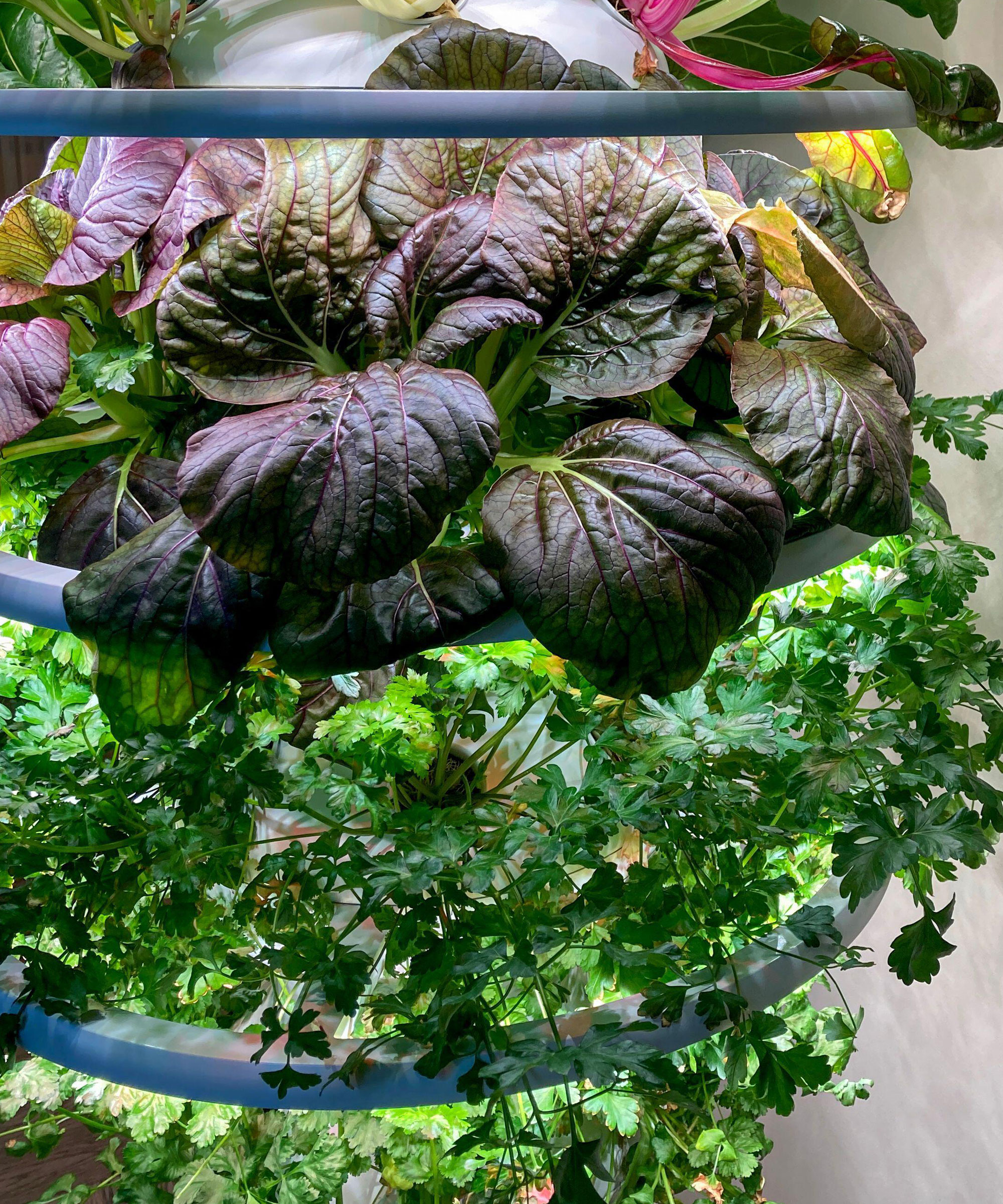
Hydroponically grown plants are fed through nutrient-rich water
In hydroponic gardening systems, plants get their nutrients from a liquid solution instead of soil. Look for a high-quality, water-soluble fertilizer made for hydroponic systems and follow the instructions for mixing and using it. Check and adjust the pH and nutrient concentration of the solution regularly to keep your plants healthy.
Hydroponic nutrients come in different forms. 'The most important characteristic is the difference between initial growth nutrients, and fruiting and flowering nutrients,' says Angelo Kelvakis. 'Plants need a different ratio of nutrients when they're growing flowers and fruits. This means you should expect multiple parts to your nutrients and to switch between these nutrients as your plants grow.'
5. Keep an eye on your hydroponic garden
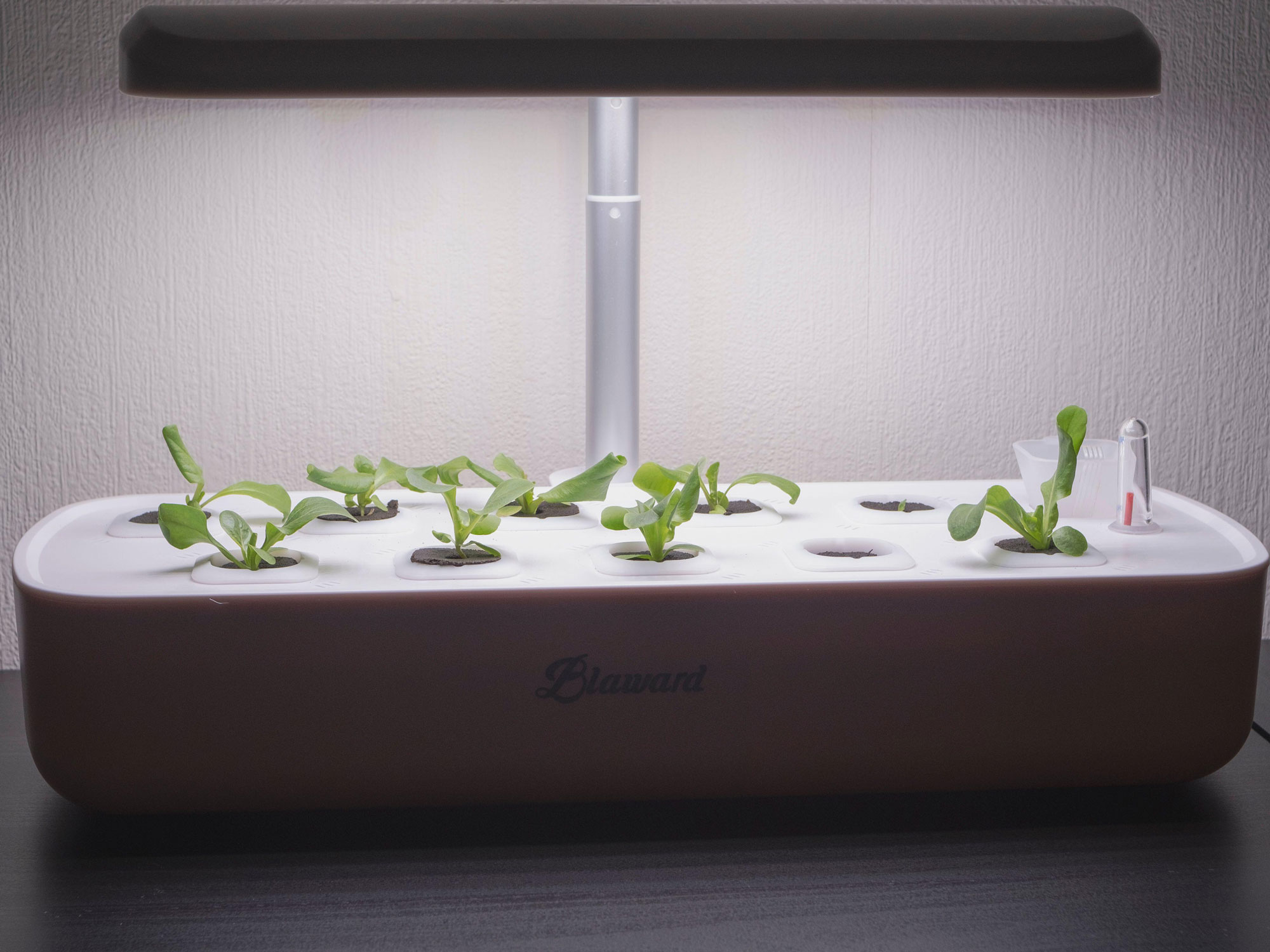
'Once everything is set up, monitor and maintain your system regularly to ensure everything is running smoothly,' says Lindsey Hyland. 'Make adjustments as needed.'
Check your hydroponic system for any issues like clogged tubes, leaks, or pests. 'Clean the system between growing cycles to prevent problems with algae and germs,' says Elliot Webb. 'Watch your plants closely for any signs of trouble, such as yellowing leaves or wilting, and address these issues as soon as possible.'
Keep up to speed with hydroponic gardening techniques, advancements, and best practice. 'On a personal level, I've gained so much from joining online forums and attending local workshops where I can engage with fellow enthusiasts who share their experiences and insights on hydroponic gardening,' says Matt Hagens, founder of Obsessed Lawn.
What are the main hydroponic growing systems?
There are several hydroponic systems to choose from, each with its own unique advantages. Elliot Webb outlines the main ones to look out for.
- Nutrient film technique (NFT): A thin film of nutrient solution flows continuously over the roots, allowing for efficient nutrient uptake and oxygenation.
- Aeroponics: Plant roots are suspended in air and misted with nutrient solution, promoting high oxygen levels and rapid growth.
- Deep water culture (DWC): Plants are suspended with their roots submerged in a nutrient solution while air stones or diffusers provide oxygen.
- Ebb and flow (Flood and Drain): The growing tray is periodically flooded with nutrient solution, then drained, allowing the roots to take up nutrients and oxygen.
- Drip systems: Nutrient solution is slowly dripped onto the growing medium, ensuring consistent moisture and nutrient levels.
Be The First To Know
The Livingetc newsletters are your inside source for what’s shaping interiors now - and what’s next. Discover trend forecasts, smart style ideas, and curated shopping inspiration that brings design to life. Subscribe today and stay ahead of the curve.
Lifestyle journalist Sarah Wilson writes about flowers, plants, garden design and trends. She has studied introductory garden and landscape design and floristry, and also has an RHS Level 2 qualification in the Principles of Plant Growth and Development. In addition to homesandgardens.com and livingetc.com she's written for gardeningetc.com, Real Homes, Modern Gardens and Country Homes & Interiors magazines. Her first job was at Elle magazine, during which time a trip to the beautiful La Colombe d'Or in St-Paul-de-Vence led to an interest in writing about all things botanical. Later as lifestyle editor at Country Homes & Interiors magazine the real pull was the run of captivating country gardens that were featured.
-
 Turns Out the Coolest New Café is Actually In Your Kitchen — Here's How to Steal the Style of TikTok's Latest Trend
Turns Out the Coolest New Café is Actually In Your Kitchen — Here's How to Steal the Style of TikTok's Latest TrendGoodbye, over-priced lattes. Hello, home-brewed coffee with friends. TikTok's 'Home Cafe' trend brings stylish cafe culture into the comfort of your own home
By Devin Toolen Published
-
 5 Bathroom Layouts That Look Dated in 2025 — Plus the Alternatives Designers Use Instead for a More Contemporary Space
5 Bathroom Layouts That Look Dated in 2025 — Plus the Alternatives Designers Use Instead for a More Contemporary SpaceFor a bathroom that feels in line with the times, avoid these layouts and be more intentional with the placement and positioning of your features and fixtures
By Lilith Hudson Published
